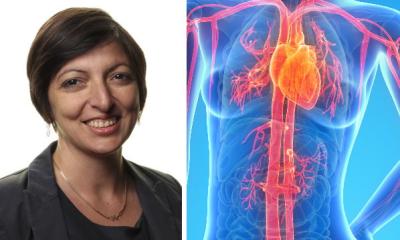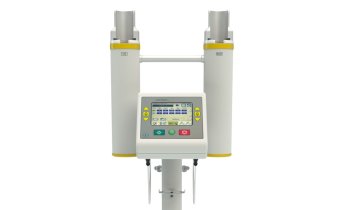News • Long-term risk assessment
MRI to identify cardiovascular disease ten years in advance
Experts from the University of Dundee’s School of Medicine have identified that an increased, but still normal, mass of the heart’s left ventricle could be used to indicate an increased risk of future cardiovascular events, even when the organ was functioning correctly at the time of assessment.

Image source: University of Dundee
The findings, which also indicated different risk factors in men and women, have been published in the journal Radiology. The study was supported by Chest Heart and Stroke Scotland (CHSS).
“This is a very exciting and significant development,” said Professor Jill Belch, part of the School of Medicine’s Division of Cardiovascular Research, who led the study. “We looked at thousands of health records and it became apparent that the mass of the left ventricle was a clear indicator of future risk of cardiovascular disease. What made our findings particularly interesting was the difference we noted between men and women. In men, we found that a larger left ventricle, associated with heart attack and stroke, was linked to the diastolic - the bottom measure, - blood pressure. This level was what we would consider to be normal, albeit in the upper level. In women, we found a link between an increase in left ventricle mass and cholesterol. Again, this level was in the upper end of what we would consider normal. Both the level of blood pressure and cholesterol level were such that, normally, no preventative treatment would be offered.
“We have clearly identified a very early marker of future cardiovascular disease which can be detected via a simple MRI scan. This is a widely available, easy to perform procedure that our study has proven to be able to identify people at risk of cardiovascular disease who may have no other identifiable risk factors, ten years before the event. The ability to provide pre-emptive treatment for patients at a stage where their heart is working perfectly well could save vast numbers of lives which are cruelly taken from us as a consequence of cardiovascular disease.”
The findings of our TASCFORCE study make it clear that we need to encourage men to monitor and reduce their diastolic blood pressure, while for women we should be looking at increasing the use of statins at an earlier stage to control cholesterol levels
Jill Belch
The TASCFORCE findings utilised data collected from volunteers between January 2008 and February 2013. A total of 5015 Tayside volunteers, all older than 40 years of age and with no history of cardiovascular disease, took part in the data collection phase in the knowledge that their information would be revisited a decade later. From this, 1528 volunteers underwent an MRI. This selfless action has led to this new discovery, and the researchers would like to thank the participants for their involvement.
Ventricles are two lower chambers located on either side of the heart. They receive blood from the heart’s upper chambers, with the right ventricle pumping blood to the lungs, and the left ventricle supplying blood to the rest of the body. Remodelling of the left ventricle is a well-established marker for people considered at high-risk of cardiovascular disease, occurring early in the disease process and signalling issues such as hypertension. However, the risks for those considered low to medium risk have previously been less well known.
Cardiovascular disease can refer to several conditions that narrow or block blood vessels, including heart attack, stroke and heart failure. While some people are susceptible for genetic reasons, factors which can increase a person’s likelihood of cardiovascular disease include smoking, obesity, poor diet and lack of exercise.
Professor Belch added, “The volunteers who took part in this study had no immediate risk of heart disease. This is exciting as it allows us to pick up people and treat them before any organ damage has occurred. The findings of our TASCFORCE study make it clear that we need to encourage men to monitor and reduce their diastolic blood pressure, while for women we should be looking at increasing the use of statins at an earlier stage to control cholesterol levels.”
The TASCFORCE findings have been hailed by Chest Heart and Stroke Scotland, which funded the research. The charity’s Chief Executive, Jane-Claire Judson, said, “We are proud to support the University of Dundee in their scientific research as we increase our service provision across the country. Studies like this are vital in enhancing our understanding of heart and stroke conditions as well possible ways to try and prevent their occurrence or reduce their impact on those currently affected. This research, combined with the work CHSS delivers across the country, can help us make a positive impact to people’s health in Scotland and ensure no life is half lived.”
Source: University of Dundee
13.05.2025











